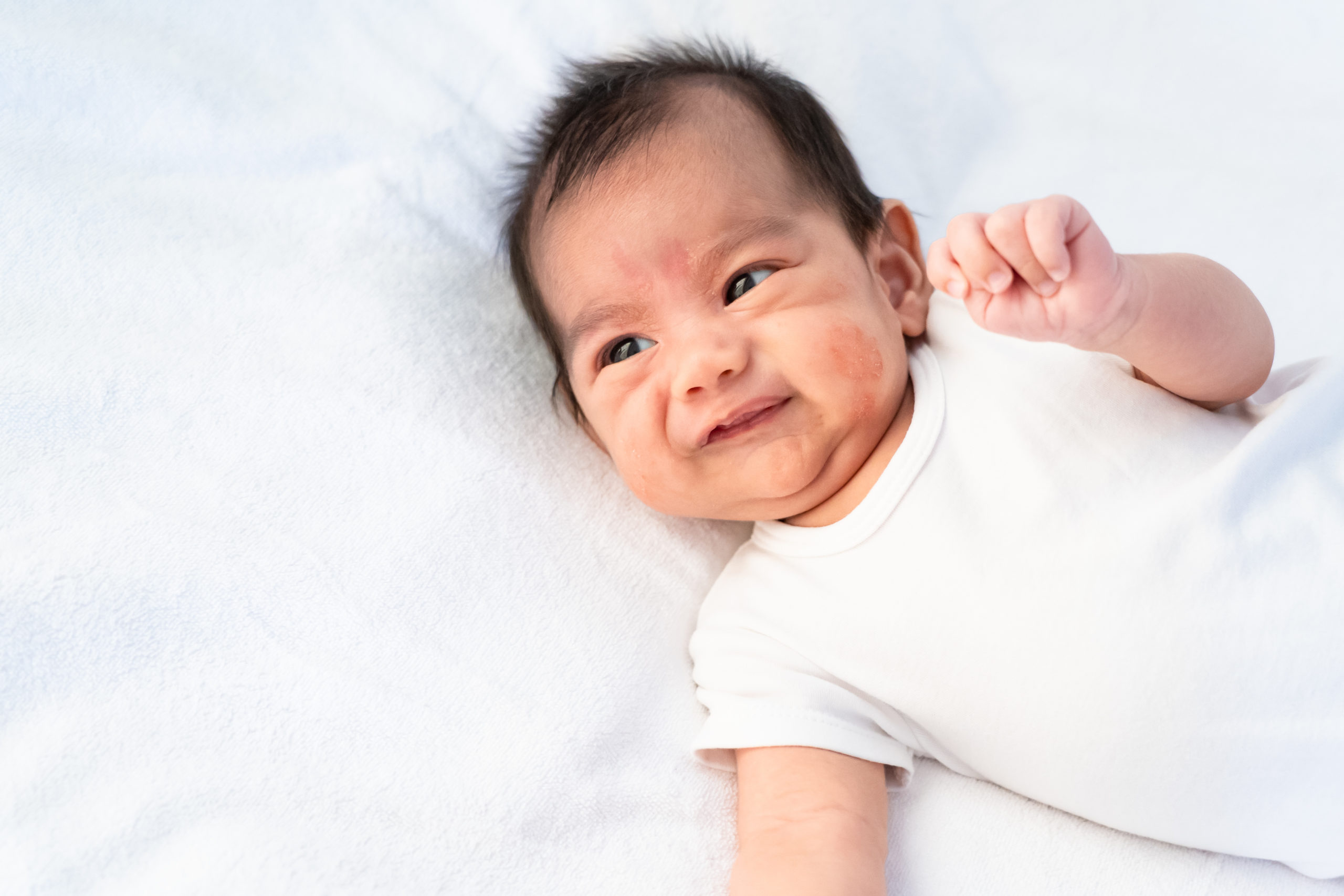What Does Milk Rash Look Like?
To a new parent, any new health concern in infants and young children can seem alarming, even if it’s simply a rash. While many types of rashes are perfectly normal and resolve on their own in time, some can linger indefinitely, prompting the parents of a child with constant rashes to ask what the cause may be. One of the more chronic rashes that can affect a newborn is eczema or atopic dermatitis (AD), sometimes known as “milk rash”. It is important to note that not all eczema or AD is related to food allergy. In fact, only about 25% of children with eczema or AD have a food allergy. In infants and young children, the most common food allergy associated with eczema is a cow’s milk protein allergy – a serious condition that requires special nutritional considerations. Because of the prevalence of rashes of all kinds in infants and young children, it can be tough for a parent to tell whether the irritation of their baby’s skin is the result of a milk protein allergy or some other ailment. So, what does eczema or AD look like, and what should you do about it?
Symptoms Associated with Milk Rash
A more telling method of determining whether your baby has milk rash is to look at what other symptoms they may be experiencing. In the majority of cases, children with CMPA display a variety of symptoms; a rash is only one of these. Unfortunately, not all signs of CMPA appear right away, which can make it difficult to link them to milk consumption.
The following symptoms of CMPA may delayed, often after several hours or days have passed. If your child shows any of the following symptoms and you are concerned about a possible CMPA, you may want to talk to your pediatrician to help you determine the cause of your child’s symptoms.
- Skin rash
- Diarrhea or constipation
- Bloody stool
- Acid reflux
- Chronic vomiting
- Colic
- Food refusal
As alarming as this list of possible symptoms may be, keep in mind that many of these issues can be caused by other, less serious conditions, so it’s important to leave the final diagnosis up to your child’s health care provider. In addition, know that CMPA tends to resolve itself by the age of 6, and as many as 75% of children with CMPA will be free of symptoms by age 3.
Below are some of the immediate symptoms often associated with more severe reactions that can occur with a CMPA. These symptoms will typically appear within minutes to a few hours:
- Hives
- Swelling, especially around the mouth and throat
- Wheezing, coughing or other signs of respiratory distress
- Sneezing or runny nose
- Stomach pain, vomiting, and diarrhea
- Anaphylaxis
What to Do if Your Child Has Milk Rash
A diagnosis of CMPA means that you’ll have to adjust your child’s diet to avoid cow’s milk protein until your health care provider tells you it is safe to reintroduce cow’s milk. You may need to meet with a Registered Dietitian to ensure your child gets adequate nutrition for healthy growth while on a restricted diet. In addition, your doctor might recommend that you start using a formula designed for children with milk allergies, which will likely be easier for your child with CMPA to tolerate.
With these gentler formulas and the elimination of cow’s milk, most children with milk rash caused by a cow’s milk protein allergy will see a reduction or elimination of their symptoms. For children who display symptoms after breastfeeding, it may be important that the mother remove any sources of cow’s milk protein from her diet since they can be passed to the child through breast milk. It should also be noted that many substitutes for cow’s milk – such as goat’s milk or soy milk – can trigger eczema or AD and possibly other, more severe reactions in those with CMPA, so they should also be avoided.
For children who cannot handle extensively broken down cow’s milk protein, the only option is a formula made with amino acids, the building blocks of proteins. These formulas are crafted to provide complete nutrition for your child, including all the proteins they’d get from cow’s milk in a form their body can comfortably process.
For instance, EquaCare Jr. is a nutritionally complete amino acid-based formula from Cambrooke intended for children over the age of one year of age and comes at a lower cost than other amino acid-based formulas on the market. Our premium formula, Essential Care Jr., is also a nutritionally complete amino acid-based formula but includes special features that are not contained in other formulas on the market. These unique features include vitamin K2 for stronger bones; low-FODMAP carbohydrates that may be easier to digest; and both DHA and lutein for brain development and eye health.. If your child has eczema or AD as a result of a cow’s milk protein allergy, ask your doctor if an amino acid-based formula would be an appropriate choice.
Amino Acid Formulas for Children with Milk Rash and Cow’s Milk Protein Allergy
When your child is young, it’s important to find ways of giving them the nutrients they need to properly grow and develop without exposing them to their allergens. Doing so can be tricky for many parents, but it doesn’t have to be that way; try EquaCare Jr. or Essential Care Jr. and see for yourself how easy it can be to provide for your child, even if they have eczema or a serious cow’s milk protein allergy. To learn more, visit us online or call (833) 377-2773 today.




